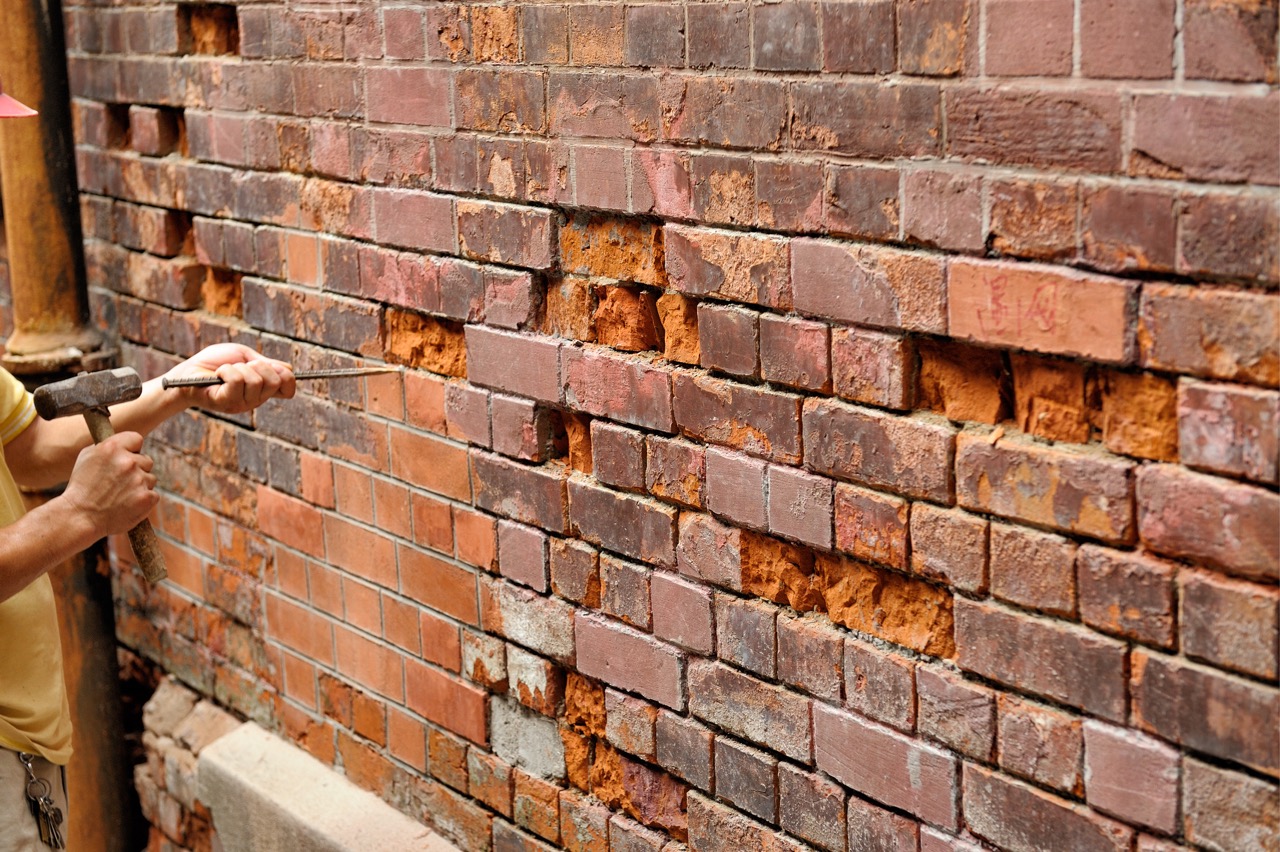Trusted Tuckpointing Services for Improving Block and Rock Surfaces
Trusted Tuckpointing Services for Improving Block and Rock Surfaces
Blog Article
Opening the Tricks of Lasting Masonry Construction Practices for Eco-Friendly Buildings
Amongst the myriad techniques to green structure, sustainable stonework building stands out as a time-tested and sturdy technique that holds a wide range of untapped capacity. From the selection of materials to cutting-edge building strategies, the tricks to attaining sustainability within masonry building and construction are diverse and fascinating.
Advantages of Lasting Stonework Construction
Embracing sustainable masonry building methods not just minimizes ecological influence yet additionally offers long-term economic benefits to builders and communities. By utilizing materials like recycled bricks, blocks, and stones, builders can significantly decrease the carbon footprint of their projects while advertising source performance. In addition, lasting stonework building methods, such as appropriate insulation and thermal mass homes, can improve energy efficiency within buildings, bring about lowered functional expenses in time.
Furthermore, the resilience and resilience of stonework frameworks contribute to long-term economic advantages. Buildings constructed using lasting stonework practices often call for much less maintenance and repair, converting to set you back savings for builders and homeowner. The durability of masonry products also ensures that frameworks remain secure and safe, decreasing the need for regular remodellings or substitutes.
Eco-Friendly Stonework Materials
Utilizing environmentally friendly stonework products is a pivotal step towards improving the sustainability of building and construction techniques and reducing environmental effect while making best use of long-term economic benefits. Sustainable masonry materials are sourced, created, and used in a fashion that lowers total ecological impact. Sustainable concrete blocks incorporate recycled aggregates and may feature improved insulation residential or commercial properties, contributing to energy effectiveness in buildings.
Additionally, natural materials like adobe, rammed earth, and straw bales provide outstanding thermal mass homes, decreasing the requirement for heating and cooling energy. These products are often in your area readily available, advertising local economic climates and minimizing transportation-related carbon discharges. By selecting environmentally friendly masonry products, building and construction jobs can substantially decrease their environmental impact and add to the development of healthier, more sustainable constructed atmospheres.
Energy-Efficient Masonry Techniques
Power performance plays a crucial role in boosting the sustainability of stonework building practices. By applying energy-efficient stonework techniques, builders can dramatically minimize the overall power usage of a building, bring about lower operational expenses and a smaller ecological footprint. One key energy-efficient stonework technique is making use of thermal mass, which includes incorporating thick materials like concrete or block into the structure's structure to soak up and keep warmth. This assists regulate interior temperatures, minimizing the need for mechanical home heating and cooling systems.

Innovations in Sustainable Masonry
Current innovations in lasting stonework practices have brought about innovative techniques that are reshaping the building market. One such advancement is the growth of self-healing concrete, which makes use of article source microorganisms embedded within the concrete to heal cracks autonomously. This breakthrough not only minimizes upkeep expenses however additionally enhances the toughness of stonework structures, contributing to their sustainability.
Another notable development is the use of recycled aggregates in masonry construction - masonry contractor. By incorporating materials such as crushed ceramic waste or recycled glass into concrete blends, builders can reduce the ecological influence of building and construction jobs while preserving structural integrity. This technique not just draws away waste from garbage dumps however also conserves all-natural sources, making it a crucial improvement in sustainable masonry construction
Furthermore, the assimilation of electronic style tools, such as Structure Details Modeling (BIM), is reinventing the method masonry frameworks are prepared and built. BIM enables for more precise estimations, minimized material wastefulness, and enhanced energy performance, eventually resulting in even more lasting building techniques. These advancements collectively indicate an appealing future for sustainable stonework construction in the period of environment-friendly buildings.
Future Trends in Stonework Sustainability
With the ingenious strides made in lasting masonry techniques, the future patterns in masonry sustainability are positioned to further transform the building and construction market. Among the essential fads shaping the future of stonework sustainability is the enhanced assimilation of innovation. Improvements such concrete admixture as Structure Info Modeling (BIM) and online fact simulations are being utilized to maximize masonry building and construction processes, bring about decreased product waste and improved energy performance in buildings.
Moreover, the development of unique lasting materials is established to play a significant function in boosting the eco-friendliness of masonry building. masonry contractor. Technologies like self-healing concrete, recycled aggregates, and bio-based binders are acquiring traction for site web their capacity to minimize environmental effect while keeping structural stability

Verdict
In verdict, sustainable masonry construction practices provide various benefits for environment-friendly structures. By making use of green products and energy-efficient strategies, stonework can add to an extra lasting constructed setting. Technologies in lasting stonework are continually being established to additionally improve the environmental performance of buildings. Looking towards the future, the fad of stonework sustainability is anticipated to grow, resulting in more eco-friendly and energy-efficient construction techniques in the years ahead.
Report this page